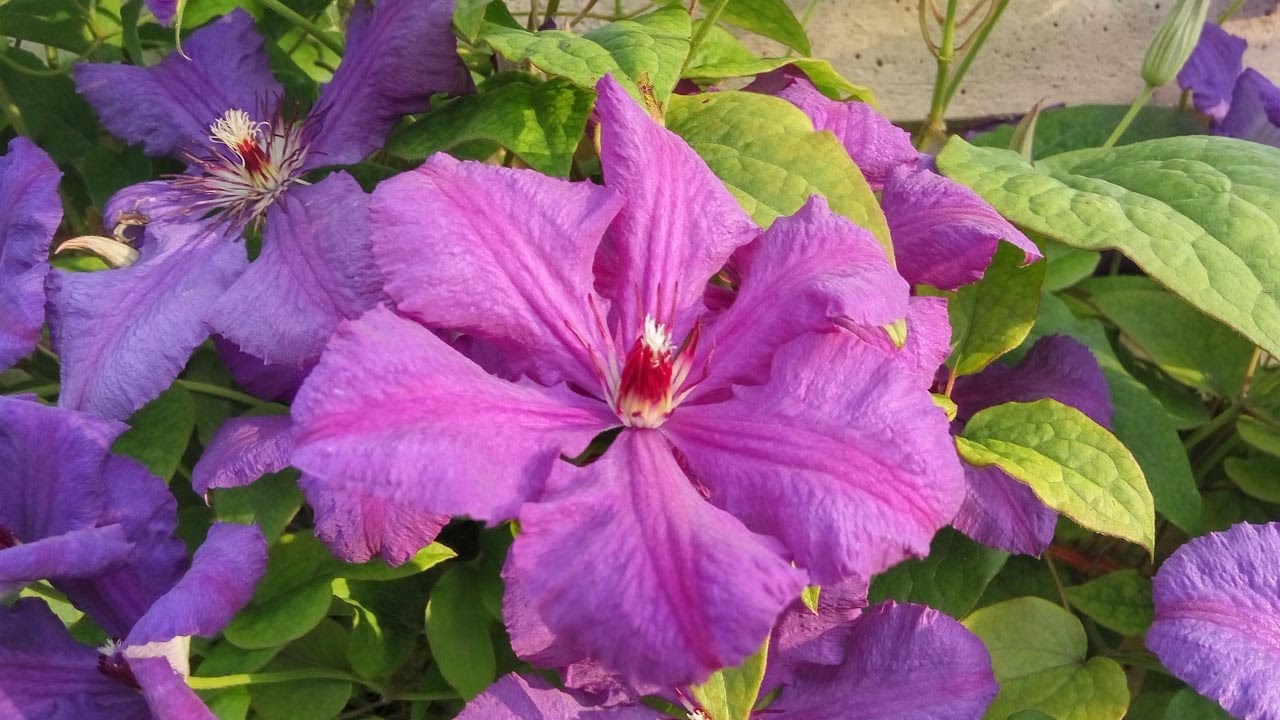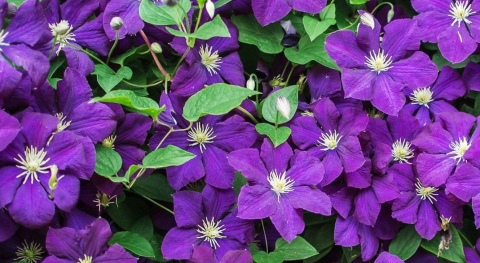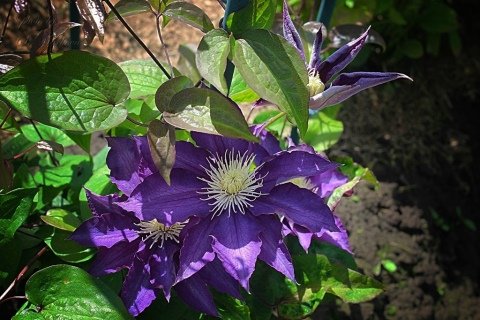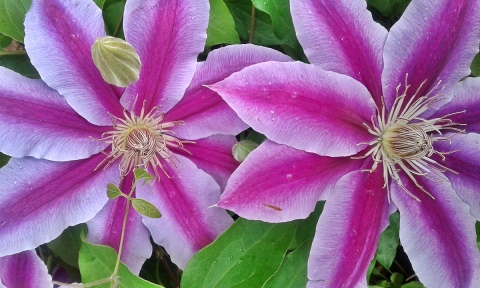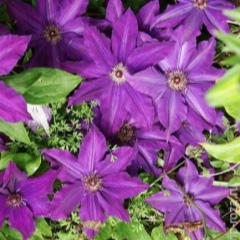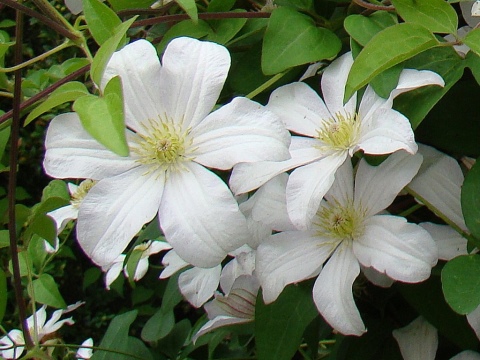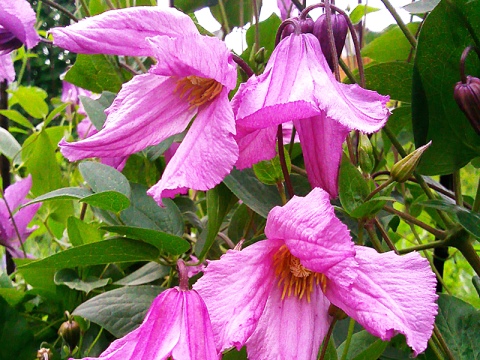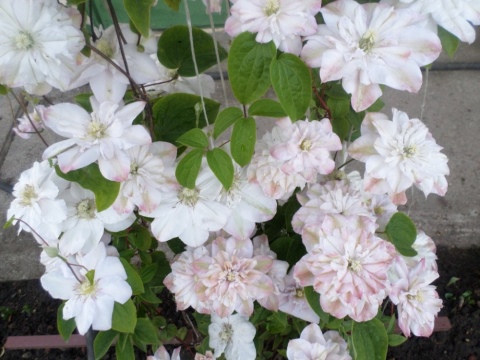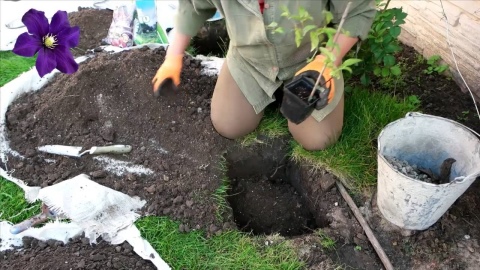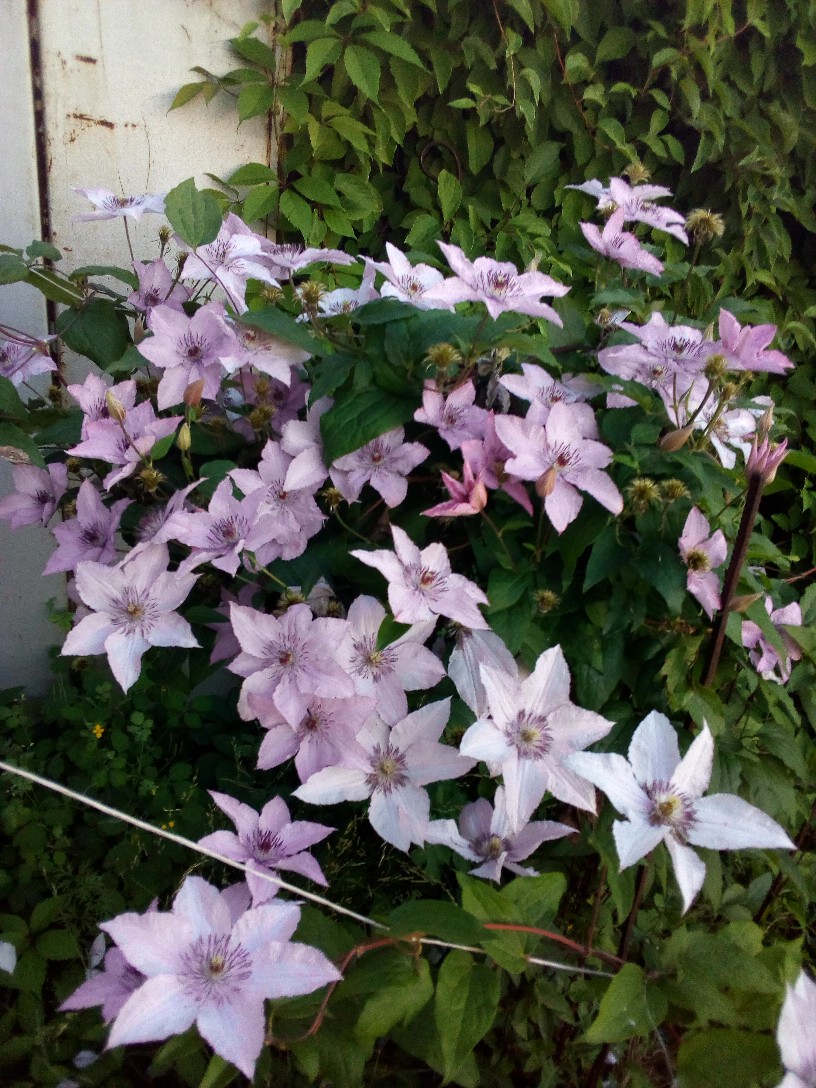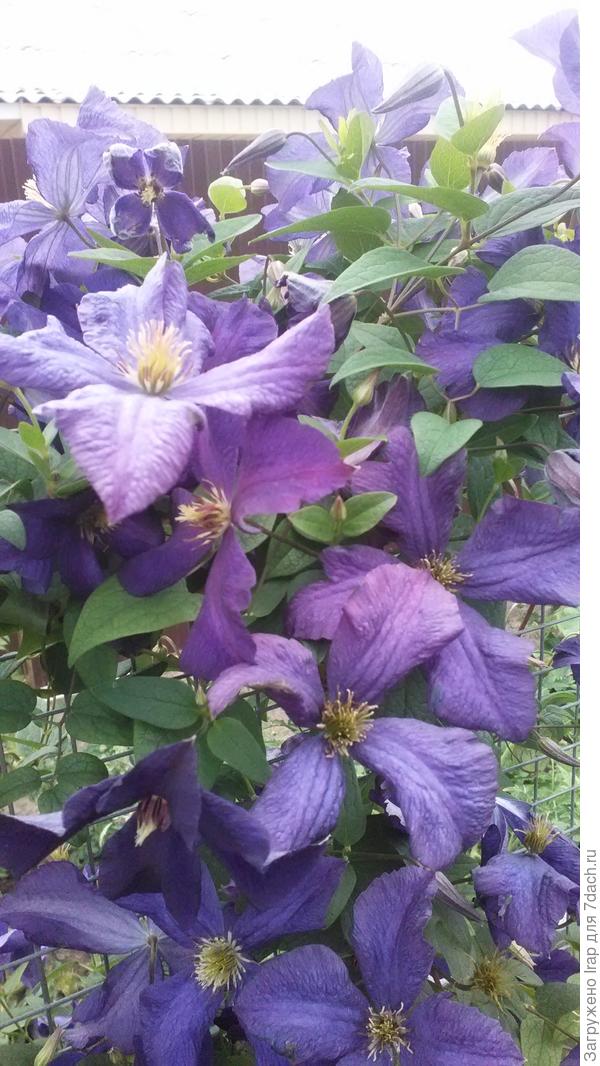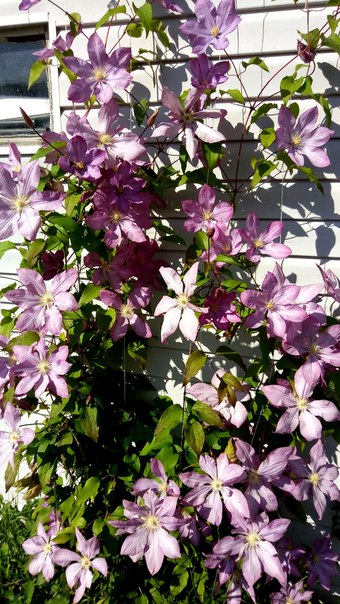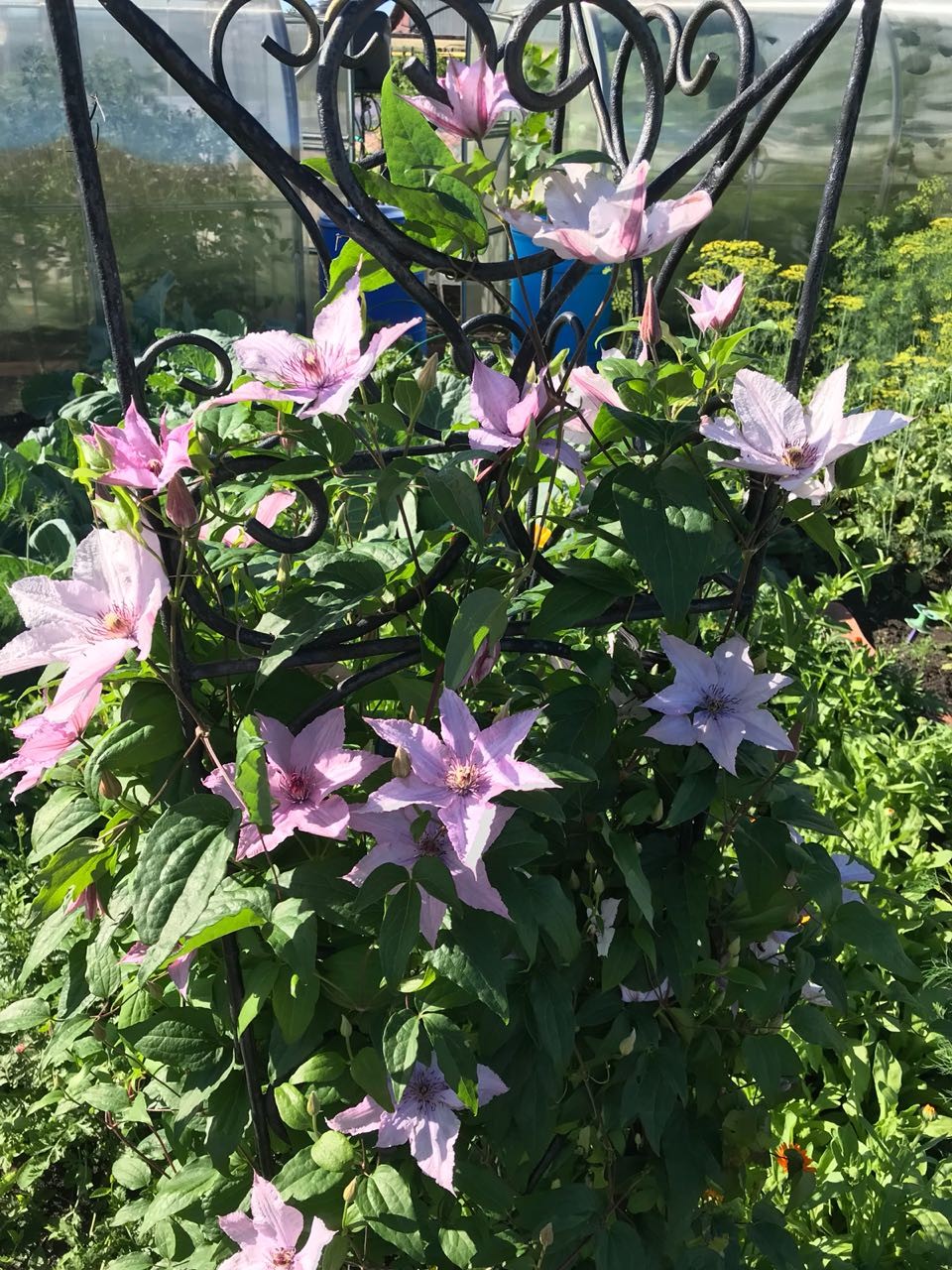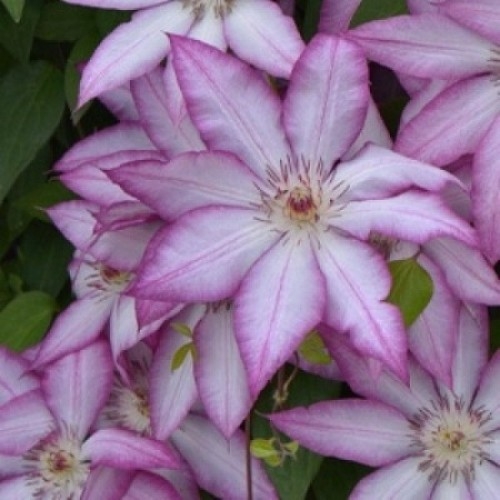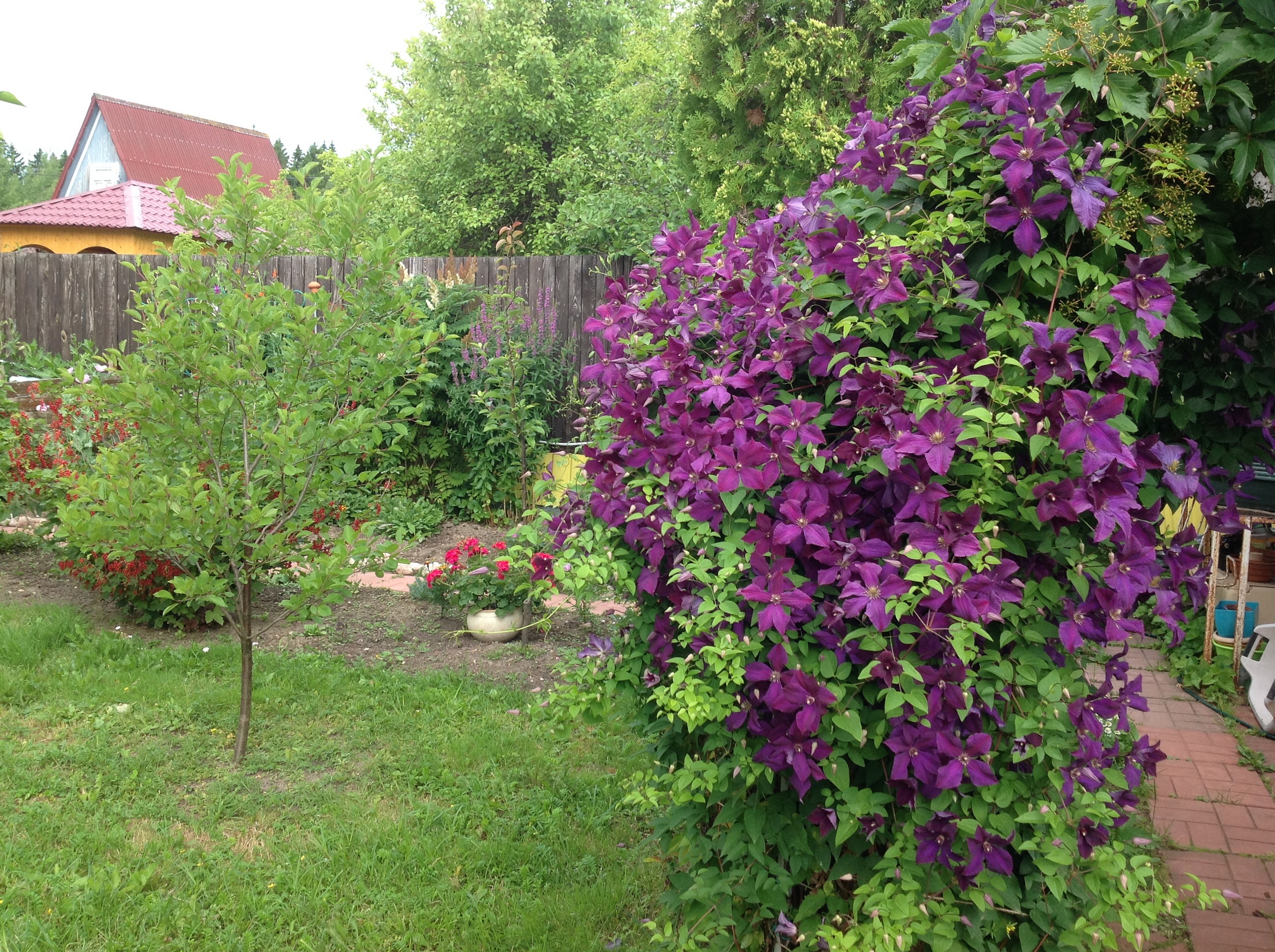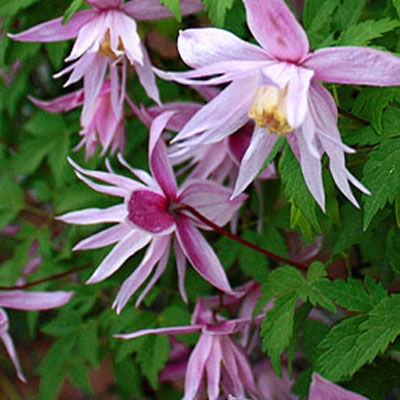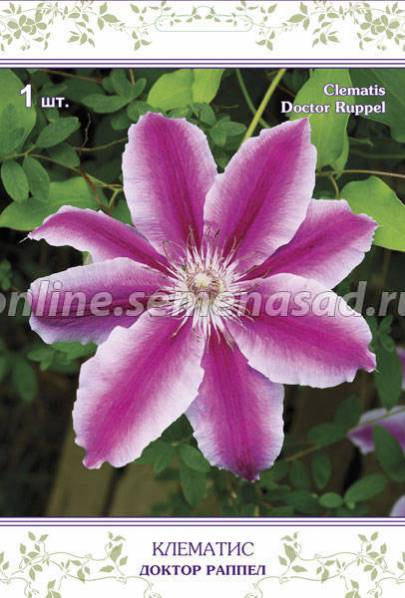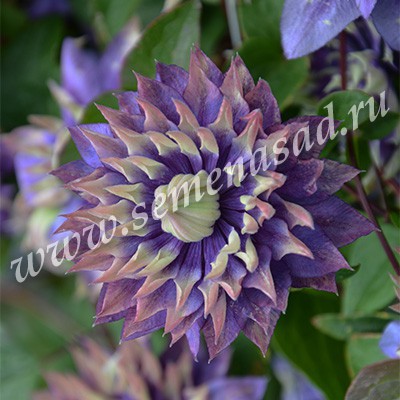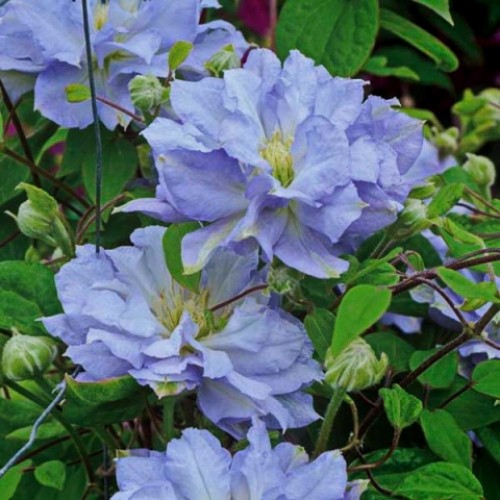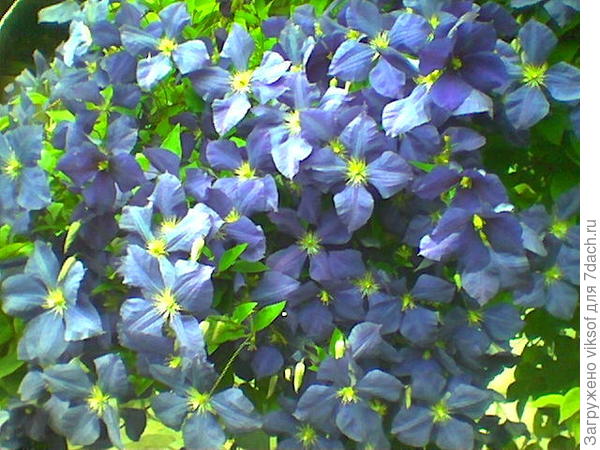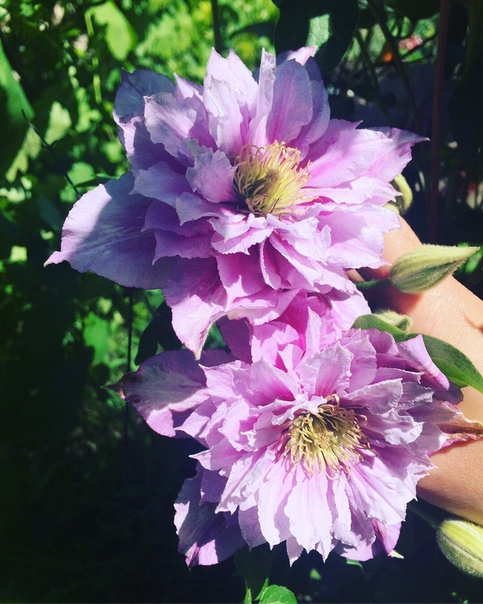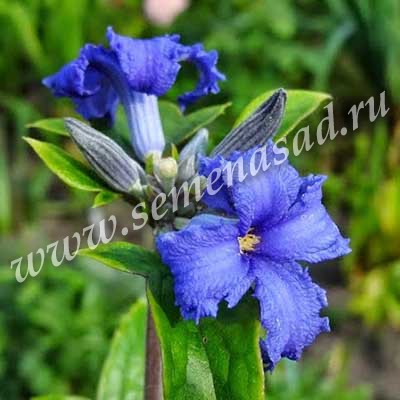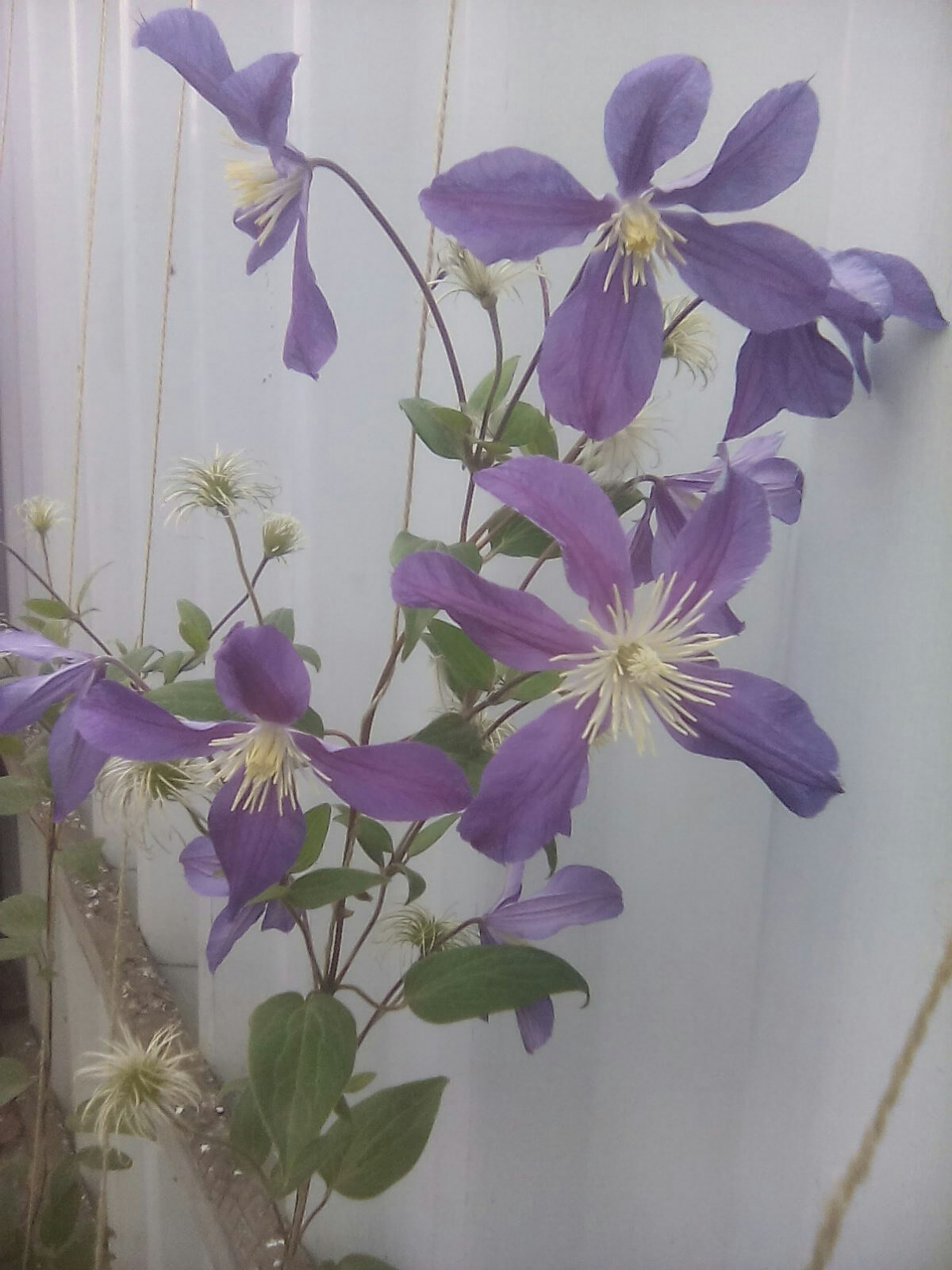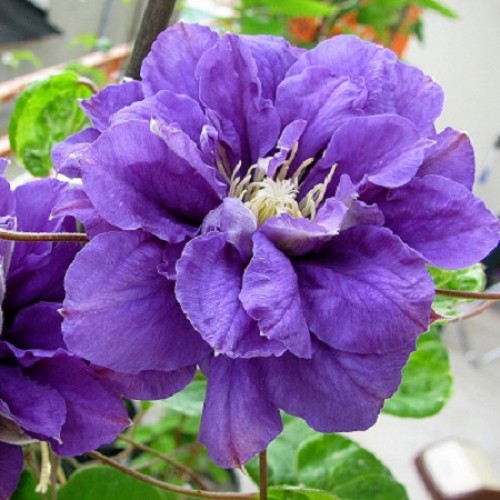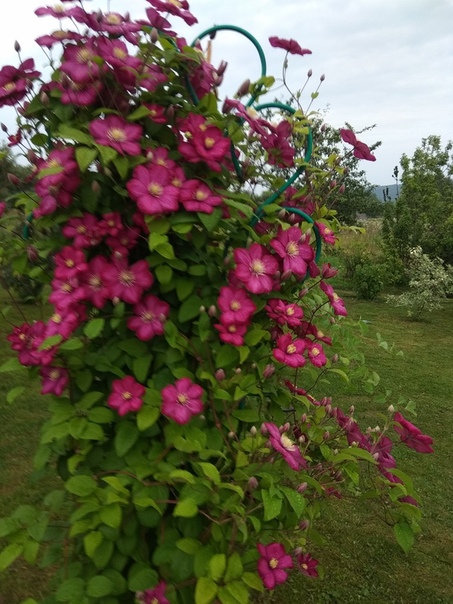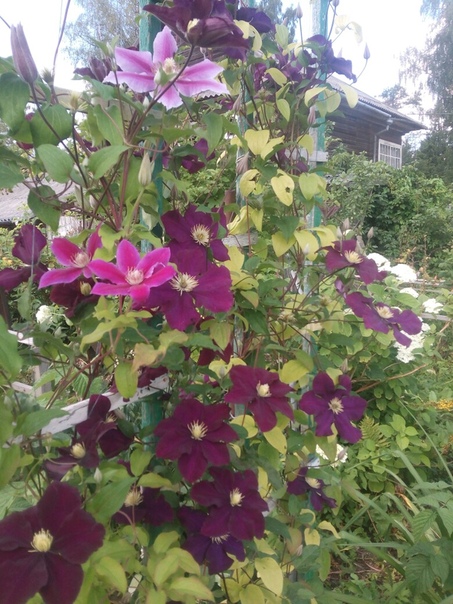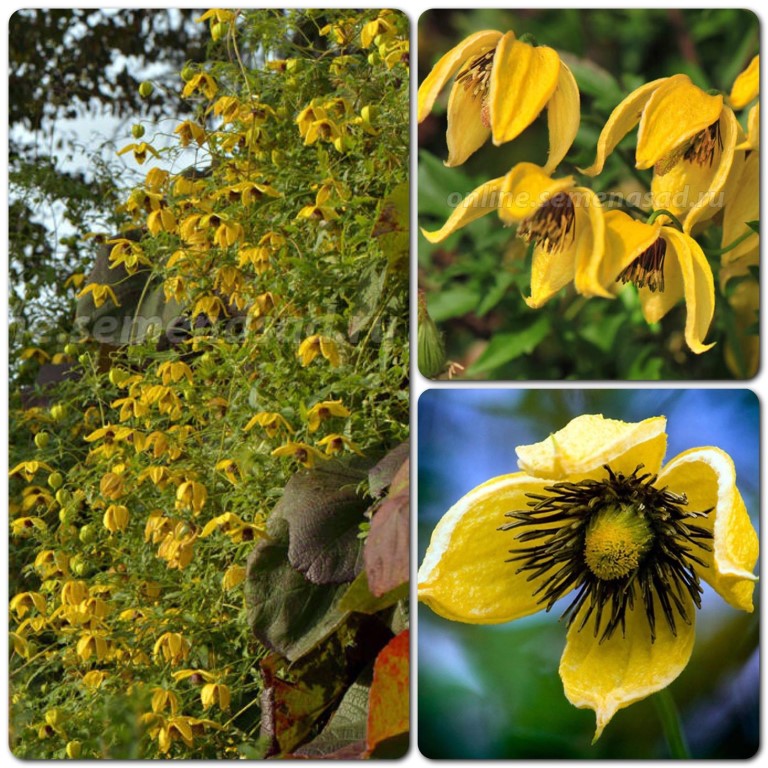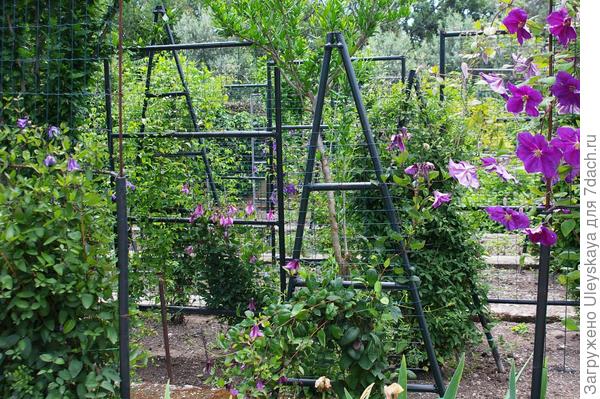What are bush (whole-leaved) clematis
Clematis (aka clematis) is a plant from the Buttercup family. Most gardeners associate this name with long vines, but in nature there is another option - low-growing herbaceous bushes 0.45-1 m high. In nature, they are found in the Caucasus, Central and Eastern Europe, Asia Minor and Central Asia, China.
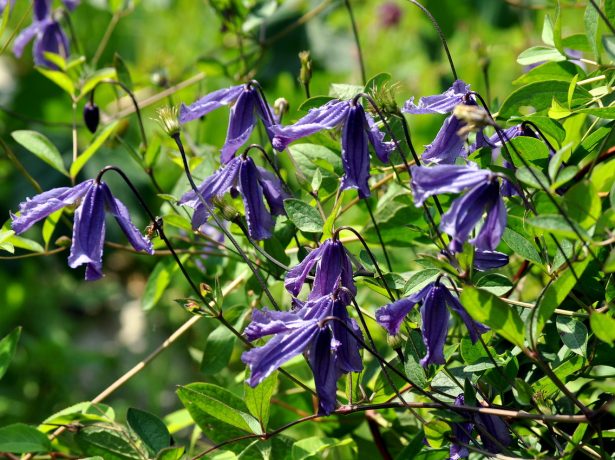
Natural bush clematis look no less pretty than hybrids bred by breeders
In hybrids bred on their basis, the stems reach 2 m in length. They cannot cling to a support, therefore, flexible shoots need a garter. The leaves of bush clematis are in most cases elongated, ovoid, with a sharp tip, up to 12 cm long. On the stems they are arranged in pairs, opposite each other. The roots are thin, almost threadlike, resembling a tangled ball.
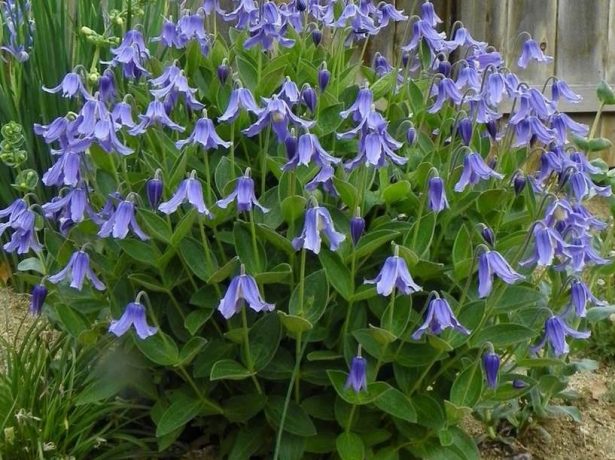
Most bush clematis need a garter, but there are varieties with upright shoots.
Most clematis bloom begins in June (depending on the variety, throughout the month) and lasts at least 30–40 days. Some varieties continue to delight the eye until September. Flowers - drooping "bells" with 4-6 petals 5-8 cm in diameter (less often up to 12 cm). On each shoot, 7-10 of them bloom. The petals are painted in snow-white, pink, different shades of blue and lilac. Anthers light yellow.
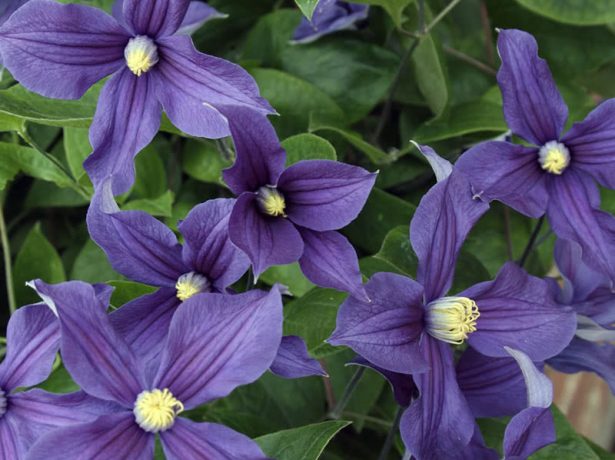
Many varieties of clematis decorate the garden all summer.
In the fall, in place of the faded buds appear as if lacy grayish infructescence. They also look very decorative, they consist of many achenes, surrounded by antennae and feathers.
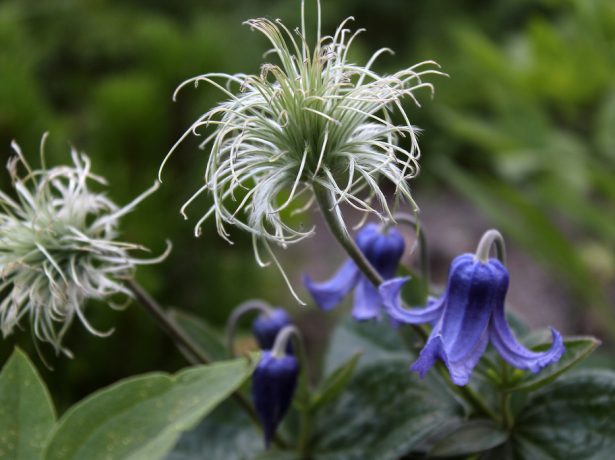
Clematis fruits can easily be mistaken for flowers from a distance.
Frost resistance down to -30–35 ° C allows bush clematis to endure the Ural and Siberian winters without shelter. For central Russia and other regions with a temperate climate, such cold resistance is more than sufficient.
Clematis, subject to regular watering, as an initially southern plant, also tolerates heat well. He has nothing against landing in direct sunlight, on the contrary, open areas, well lit and warmed up for him, are the best option. The most favorable temperature range for plant growth and development is 24–29 ° C.
Low-growing bushes in a flower garden
Shrub clematis are widely used in landscape design. The easiest option is to plant it as a tapeworm or potted plant. You can also form a hedge of them (a combination of flowers of different shades looks especially impressive) and use it as a "green carpet", including in rock gardens and rockeries.
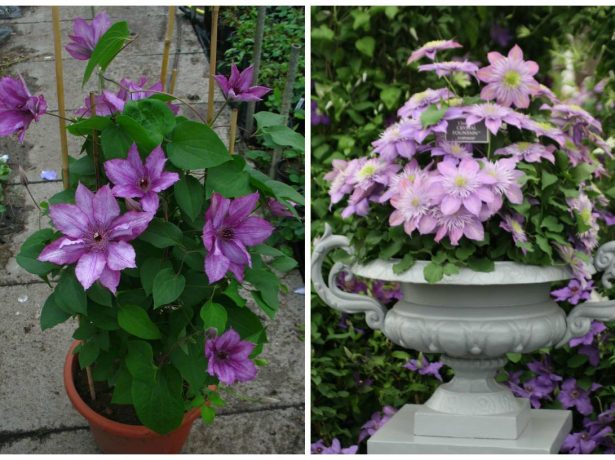
Dwarf varieties of bush clematis do well in pots and containers
Deprived of support, clematis is a beautiful ground cover plant. In the flowerbed, it is well adjacent to the bushes of jasmine, barberry, any low conifers. In partial shade or shade, the composition will be complemented by hosta and astilba. Nobody forbids combining bush and liana-like clematis. On the contrary, the lower and more compact varieties will cover the often "balding" lower part of the vines.
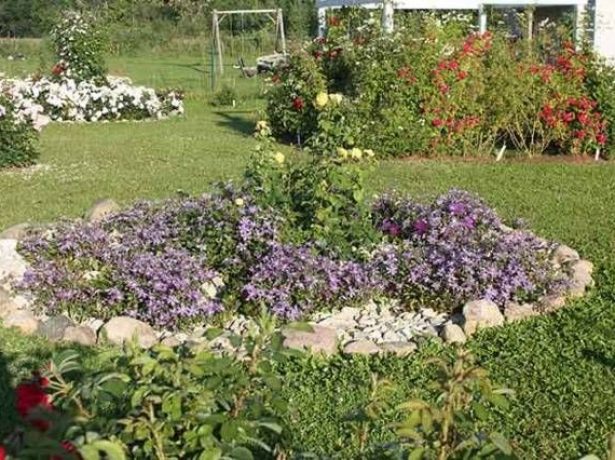
The bush clematis, devoid of support, creeps along the ground, covering it with a solid carpet
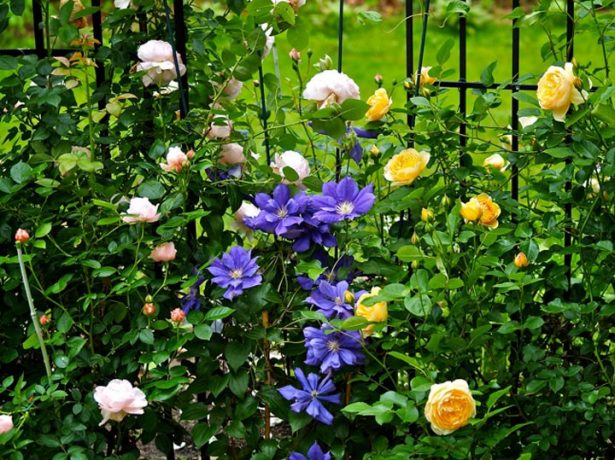
Clematis and roses - the trend of recent years in landscape design
Among the undoubted advantages of clematis:
- general unpretentiousness in care and endurance;
- decorativeness and duration of flowering, a variety of varieties;
- frost resistance;
- wide range of uses in landscape design.
Certain disadvantages are also present:
- it is necessary for most varieties to tie the stems to the supports;
- exactingness to watering, especially in the heat;
- needs annual pruning;
- after frequent heavy rains, dense bushes tend to disintegrate, turning into a sloppy mass of tangled shoots.
The main characteristics of the variety
The variety is not officially registered in the State Register of the Russian Federation. From the reviews and advertising descriptions, the main features of the Royalty hybrid apple tree can be distinguished:
| Parameter | Characteristic |
| Culture | Ornamental apple tree (Malus Mill.) |
| Variety | Royalty |
| Life cycle | Perennial, about 65 years |
| Tree height | On average 2-6 meters |
| Color, size and shape of flowers | Raspberry-purple, medium size (diameter 4 cm), collected in loose umbellate inflorescences; purple-red buds |
| Flowering period | Mid May - early June, within 14 days |
| Color, shape and size of fruits | Purple or ruby red (with anthocyanins in the flesh and skin); with a weak gloss; oval or round-conical shape; small - about 2.5-5 cm in diameter |
| Fruit weight | 5-6 g |
| Ripening period | Late |
| The purpose of the plant | Decorative landscaping for single (tapeworm), alley and group plantings |
| Reproduction methods | Vegetatively (grafting with cuttings or individual buds (eyes) - budding); generatively (by seeds) |
| Sustainability | Weakly affected by scab and phyllostictosis (brown leaf spot); resistant to the most common pests and diseases; frost-resistant, drought- and stress-resistant: it is possible to grow at a high level of environmental pollution in urban conditions |
| Plant features | The presence of anthocyanin (a coloring pigment) in all parts of the plant: leaves, flowers, fruit pulp, seeds, young bark and even wood |
| Registration in the State Register of the Russian Federation | Absent |
Various subspecies of the decorative "Royalty" apple tree, for example Royal Beauty (Royalty Beauty), due to their frost resistance are cultivated in many climatic zones of our country and abroad.
Royal Beauty (pictured) - weeping shape, characterized by the direction of growth of branches, which, hanging down, create a magnificent waterfall of leaves, flowers or fruits
You can learn more about the features of the red-leaved weeping apple tree in the video:
Flower shape
The flowers of irises usually have 6 perianth lobes: 3 internal and 3 external. According to the position of the outer perianth lobes, the following iris flower forms are distinguished:
- classic - with the outer lobes directed downward;
- semi-steaming - with outer lobes directed downward - to the sides;
- floating - with outer lobes directed horizontally.
In some varieties of Japanese irises, the inner perianth lobes can be reduced, or located in the same plane as the outer lobes. In this regard, the following flower forms are distinguished:
- Semi-floating - with 3 lobes in one plane
- Semi-floating - with 6 lobes in one plane
- Floating - with 3 lobes in one plane
- Floating - with 6 lobes in one plane
In addition, the varieties of Siberian and Japanese irises can have a double form of flowers - with more than six perianth lobes.
Planting and leaving
It is best to purchase ready-made seedlings in the spring or autumn. Clematis does not take root in summer and May, so you should not choose this time for disembarkation. A young plant is too vulnerable during this period. Clematis is planted in the sun or in partial shade so that the flowers are turned towards the light. The soil should be fertile, a drainage layer is formed in the pit before planting. Pebbles, broken brick, sand are used as drainage.
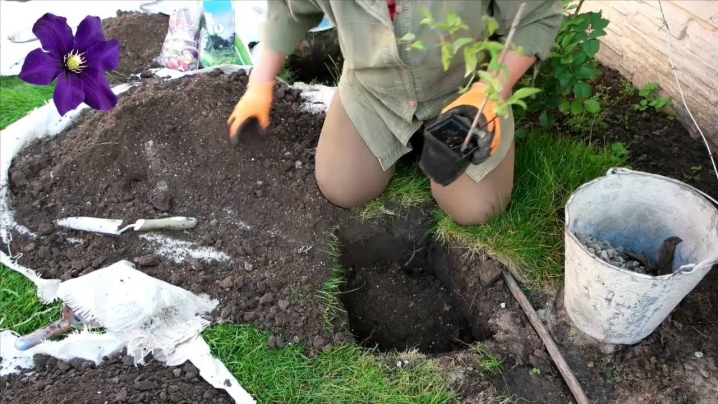
After strengthening the seedling and introducing the soil, the surface is moistened and mulched. Sawdust, shavings, hay are used as mulch. Clematis care is not too difficult. The main thing is to ensure watering on time - about once a week at the root. Moisture should not get on the flowers. Feeding a young plant is carried out 2 times per season - at first with organic matter, at the end with a mineral complex.

Which to choose?
The varieties of this group are varied in shape and color, which makes clematis popular with both specialists and novice gardeners. The choice of a variety is important not only from the point of view of aesthetics, but also from the growing region. Siberia, the Far East, the Middle zone, the European part of Russia are suitable for breeding early and mid-early clematis. In these regions, winters are rather harsh and summers are short. The varieties are perfect for these areas:
Viticella;
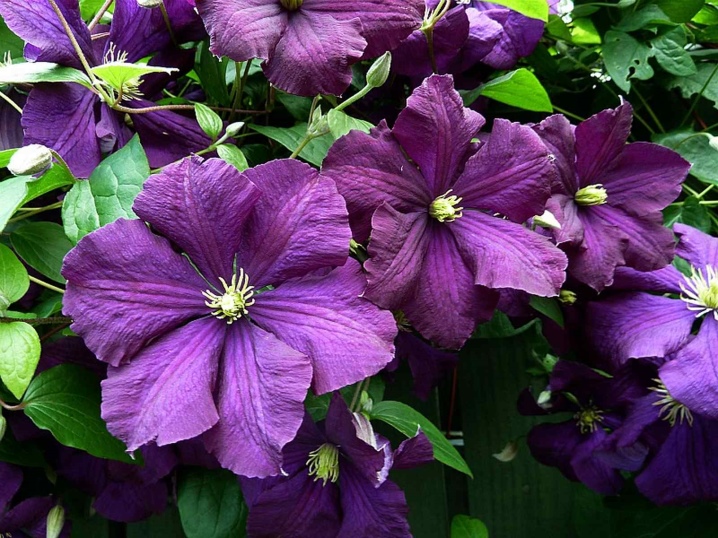
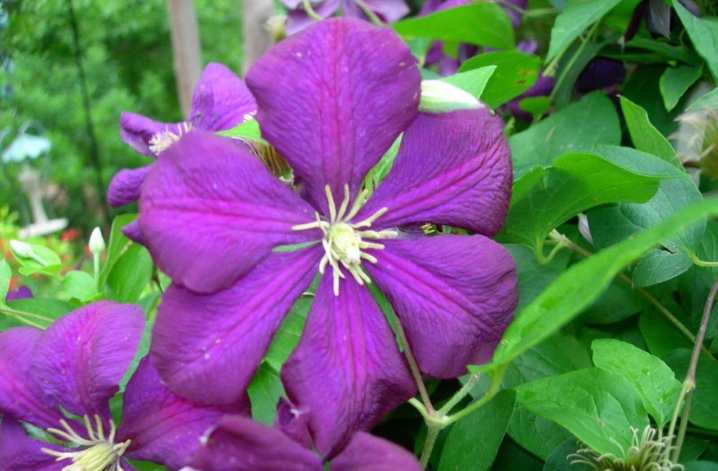
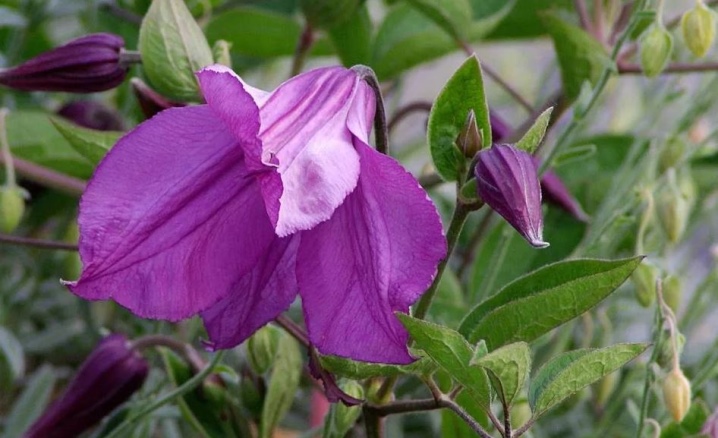
The large-flowered group is mainly represented by varieties of the hybrid type. Gardeners distinguish the main subgroups, in which flowering falls on new and last year's branches. According to this characteristic, there are 3 groups of plant pruning. Most of the large-flowered varieties form buds on the top of the shoots. This point is important for choosing a suitable support.
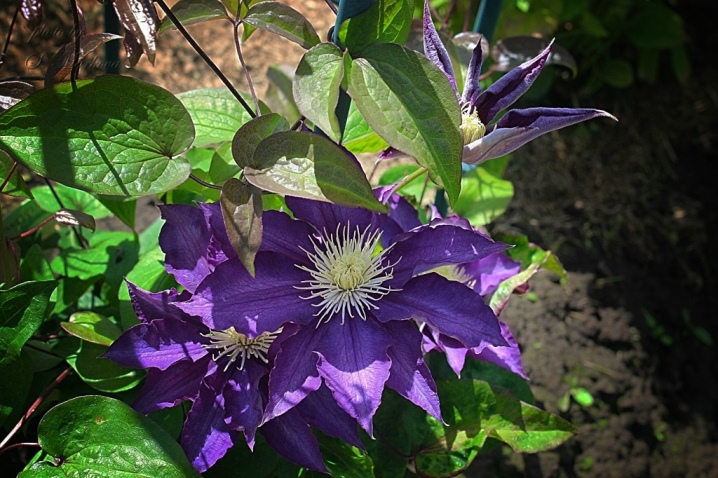
Clematis of the Atragene group
One of the simple but charming clematis of the first pruning group is the Atragene clematis. They are taken into a separate genus and are very popular among gardeners due to their simplicity in cultivation and the modest size of the vines, for which they even received the affectionate nickname "princes".
For clematis of the Atragene group, the following signs are characteristic:
- early and abundant but short flowering;
- the ability to grow in the shade;
- high resistance to diseases and low temperatures;
- minimal care (without pruning, without removing shoots and shelter for the winter);
- decorative appearance after flowering due to beautiful seed bolls;
- all varieties are good honey plants.
One of the most beautiful representatives of Atragena clematis can rightfully be considered the following varieties:
- Markhams Mink;
- Francs;
- Jutta;
- Pink Flamingo;
- Betina;
- White Swan;
- Cecile;
- Ballet Skirt.
Clematis Markhams Mink
A compact bush no more than 3 m high blooms early, in April, and until early June decorates the site with small but very beautiful semi-double purple inflorescences.
Clematis Franchi
A small bush with a height of only 2 m looks good both without support in the form of a liana creeping along the ground, and against the wall on which it climbs. Differs in repeated flowering:
- the first wave of buds flaunts from April to May;
- the second bloom occurs in July and lasts until the end of summer.
On this topic:
BACK
FORWARD
1 of 3
Small inflorescences are similar to wide-open bells, often semi-double, painted in bright blue.
Clematis Jutta
Liana can grow up to 3 m in height, weaves well. It blooms once, somewhat later than most varieties of this group - at the end of May. The inflorescences are large enough for representatives of Atragene, reaching 6 cm in diameter, red-purple in color, the extreme petals are wide open, and the middle is semi-closed and slightly lighter at the base of the petals.
Clematis Pink Flamingo (Flamango)
One of the most beautiful and delicate clematis of Atragene, characterized by long flowering: small buds cover the bush from the end of April to the end of August, blooming almost without interruption, and only in June clematis rests a little between flowering. The inflorescences are small, but simply lovely: they are always semi-double, they are painted pink, while the base of the petals is a couple of shades darker, and the tips are almost white. The height of the bush itself does not exceed 2 m.
Clematis Betina
Another cultivar with long flowering: a short liana "growing" no more than 2 m at the end of April is covered with albeit small, but gorgeous inflorescences-bells of burgundy color with wide petals. Flowering lasts until the end of summer, and already from July, decorative fluffy infructescences are formed in place of the buds. Against the background of dark green foliage, the buds look very beautiful. The shrub leaf has a dense and wrinkled structure.
Clematis White Swan
The Polish variety fully justifies its name: rather large (up to 7 cm in diameter) terry inflorescences really look like white swans, and thin petals resemble airy plumage.The bush grows up to 3 m in height and winds well. Flowering begins in April, but by the end of May it fades away, but instead of buds on the liana, light seedlings flaunt, also with fluff.
Clematis Cecile
Liana can rise up to 3 m in height, it weaves well along the support or just spreads along the ground. Early bloom, April-May. The inflorescences themselves are small, but very beautiful: semi-double, wide-open, violet-blue, they almost completely hide the foliage under them, turning the bush into a living flowering wall.
Clematis Ballet Skirt (Skirt)
One of the most compact varieties of the group grows on average about 1.5 m in height, in a sunny place it can stretch up another 0.5 m, but no more. Differs in double flowering:
- the first, the most abundant wave - in April-May;
- the second, small number - in August.
The inflorescences are very beautiful: semi-double, with thin long petals, in the form of half-open bells, they are painted pink, and yellow stamens peep out from the inside of the flower.

